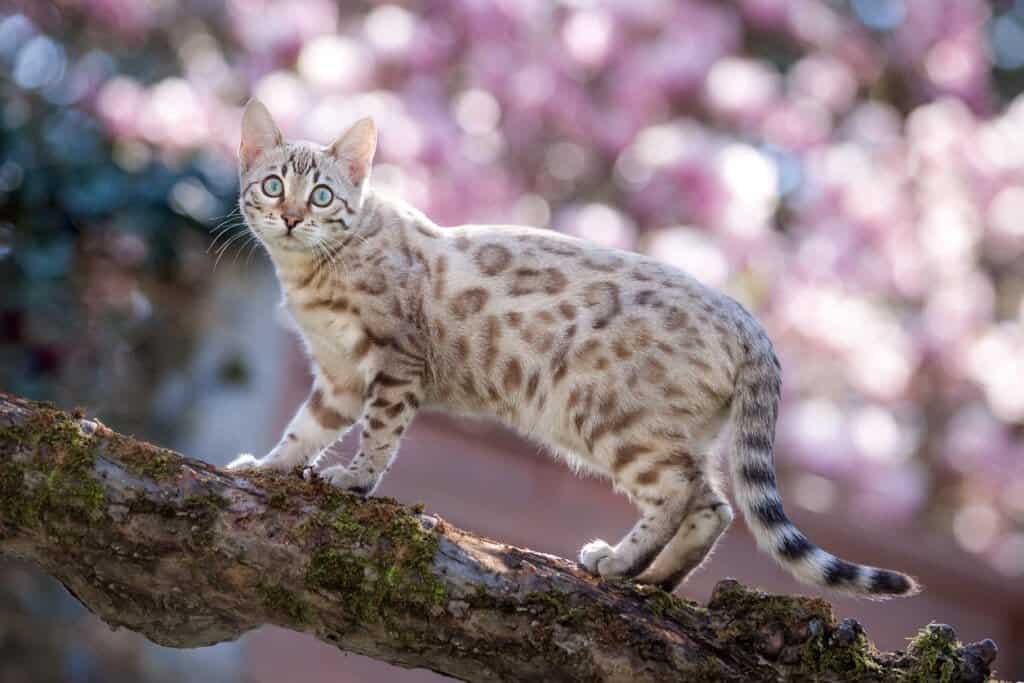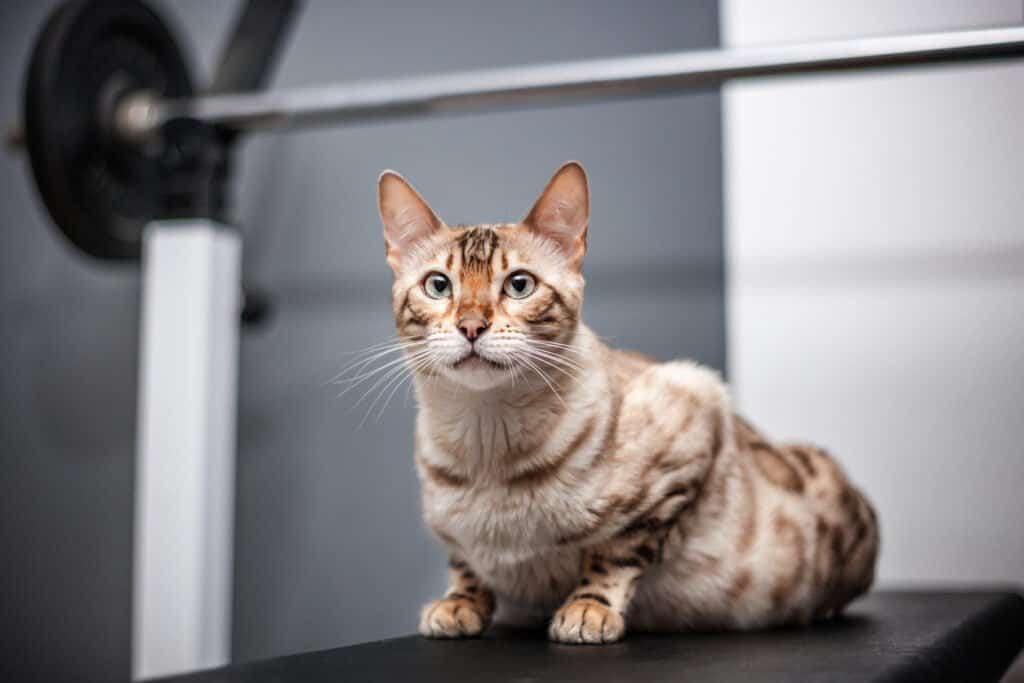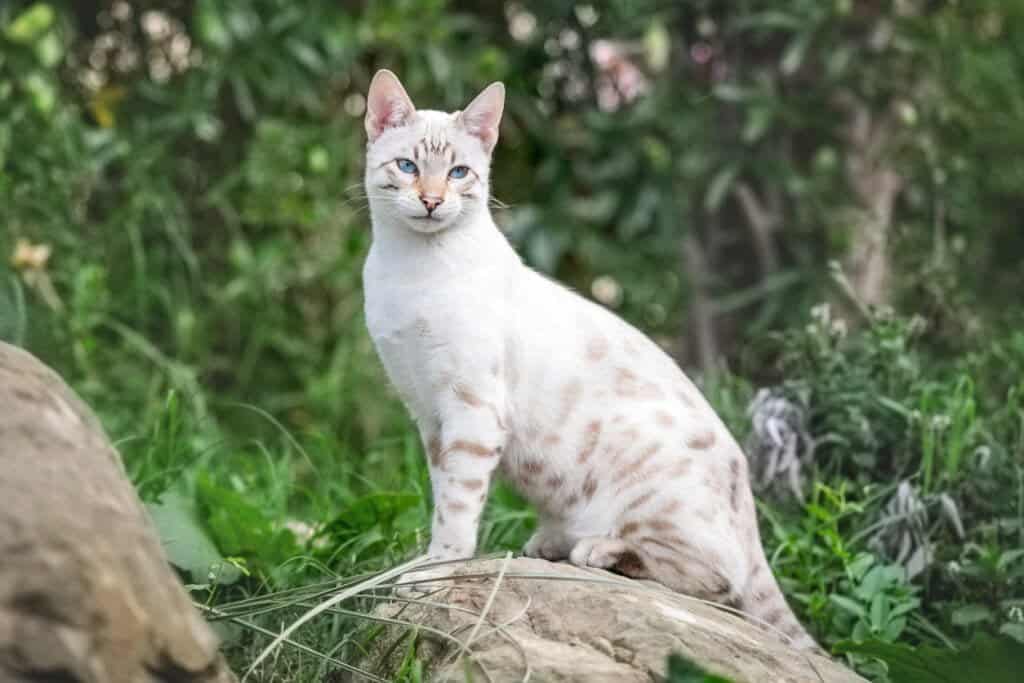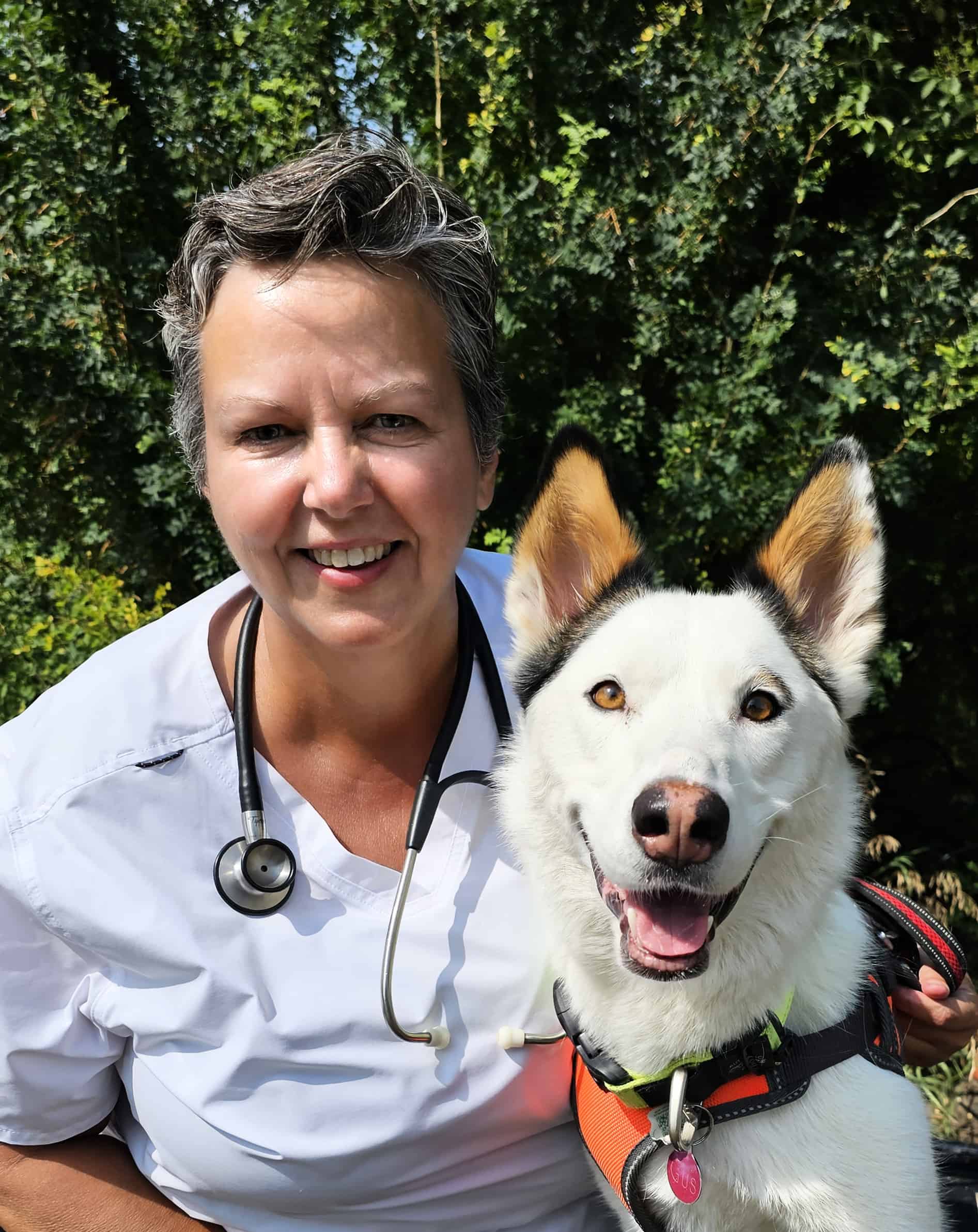Have you ever wondered about the snow Bengal cat, often referred to as the “Mini Snow Leopard? This Bengal earns the nickname due to its light colored coat, which features a light creamy base with subtle markings, setting it apart from its more traditionally colored counterparts.
Each snow Bengal is a natural wonder, with a coat as soft as the first snow of winter and markings reminiscent of their wild relatives. These cats are not just beautiful to look at; they’re also playful and loving, making them great companions.
In this article, we’ll explore everything about the snow Bengal cat, including their history, behavior, and the care they need. Join us as we enter into the world of these “Mini Snow Leopards” and discover why having one in your home could be incredibly fulfilling.
SNOW BENGAL CAT COLOR EXPLAINED
Snow Bengal cats owe their stunning appearance to a combination of genetics and selective breeding. Similar to how black, or melanistic, Bengals are compared to black panthers, snow Bengals are often compared to snow leopards.
The genetics of snow Bengal cats are characterized by the presence of specific coat color genes that result in their unique coat patterns and colors. These coats consist of characteristic Bengal markings on a pale background.
However, the markings on a snow Bengal are in the light brown to brownish-black range (seal color). You can think of these colors as a “muted” version of the traditional Bengal colors. The paler background color combined with the muted markings gives them their distinctive snow leopard look.
There are three distinct categories of snow Bengal coat colors:
- Snow Seal Lynx Bengal: This is the lightest version of snow Bengal, the most “white” Bengal cat you can find. The base color is a very light creamy white fur, and the markings are a dark or light seal color. The tail tip is dark seal brown, and the eyes are always blue.
- Snow Seal Mink Bengal: This color version has a slightly darker base color, ranging from ivory to light tan. The markings can be various shades of seal but are typically darker than those found in the snow seal lynx color (“mink” coloration simply means a color that is darker than normal; in this case, darker than a seal lynx). The tail tip is a dark seal color, and the eyes are blueish-green to aqua.
- Snow Seal Sepia Bengal: The snow seal color is the darkest version. The base color is still ivory to light tan in color but with reddish undertones. The seal markings will also have a reddish tone. The tail tip is a dark seal, and the eyes are green or gold.
These coat colors can also come in “point” versions, where the tip/points of the body (face, ears, legs, and paws) are darker than the rest of the base coat.



Coat Patterns
Like other Bengal cats, snow Bengal cats can have a spotted or marbled pattern, which can vary greatly depending on the individual cat. No matter the pattern, all snow Bengal cats will have the light base color combined with muted markings that give them their snowy appearance.
Eye Color
Snow Bengal cats exhibit a range of eye color variations based on their specific coat color. The main eye colors seen include:
- Blue Eyes: Snow Bengals often have striking blue eyes, especially in the lighter coat color variations like Snow Seal Lynx. The blue eye color complements their snowy appearance and adds to their unique charm.
- Blueish-Green or Aqua Eyes: In Snow Seal Mink Bengals, you may observe eye colors that are blueish-green to aqua. These eye colors complement the slightly darker coat coloration of Snow Seal Mink cats.
- Green or Gold Eyes: Snow Seal Sepia Bengals typically have green or gold eye colors. These eye colors can have a slightly reddish undertone, which matches the warmer tones of their coat.
The eye color can vary among individuals, even within the same coat color category.
WHAT IS THE ORIGIN OF THE SNOW BENGAL CAT?
Bengal cats are a relatively new bred of cat with origins that trace back to the crossbreeding of domestic cats and the Asian leopard cat (Prionailurus bengalensis).
The breeding program was initiated by Jean Mill, a cat breeder in the United States, in the 1960s. She sought to create a domestic cat breed with the distinctive appearance of wild leopards while maintaining a friendly and affectionate temperament.
The early Bengal breeding efforts involved crossing domestic cats, such as the Egyptian Mau, Abyssinian, and Siamese, with Asian leopard cats. Over several generations, breeders selectively bred these hybrids, aiming to preserve the leopard-like spots and rosettes, muscular physique, and distinctive coat patterns.
The breed was officially recognized by cat registries such as The International Cat Association (TICA) in the 1980s, and since then, Bengal cats have gained popularity for their exotic appearance and engaging personalities. They are considered one of the most visually stunning and sought-after domestic cat breeds today.
Snow Bengal Cat Genetics: Where Their Coat Colors Comes From
The snow Bengal cat color is a result of the Siamese cat albino gene. In early Bengal cat breeding, Siamese cats were used in outcrosses which introduced this gene into the Bengal breed.
The Siamese cat albino gene is recessive gene, meaning that it takes two copies of the gene – one from each parent – in order for the kitten to have the snow color. Snow Bengals can be the result of non-snow parents, since non-snow cats may still carry one copy of the gene.
Since the albino inheritance pattern is recessive, kittens resulting from two snow Bengal cats will always have the snow color.
If neither parent is a snow Bengal but both are carriers of the albino gene, then on average 25% of the kittens will get the snow color, while 50% will not be snow color but will carry one copy of the gene which can be passed on to their kittens.
The remaining 25% of the kittens will not be carriers of the gene and will never be able to produce snow-colored kittens.
Snow Bengal Cat Price: What Do They Cost?
The price of snow Bengal cats can vary widely depending on several factors, including the breeder’s reputation, the kitten’s lineage, coat quality, and geographical location.
On average, you can expect to pay between $1,500 to $3,000 or more for a snow Bengal kitten. However, prices can go even higher for kittens with exceptional traits or pedigrees.
Some of the factors influencing the cost include:
- Pedigree and Lineage: Cats with pedigrees that trace back to well-known and award-winning bloodlines tend to be more expensive. Expect to pay $4000 and up for show-quality kittens.
- Coat Quality: Kittens with vivid and well-defined rosettes, clear coat coloration, and glittering fur may command higher prices.
- Breeder Reputation: Reputable breeders who prioritize the health, socialization, and ethical breeding of their cats tend to charge higher prices.
- Geographical Location: Prices can vary by region, with some areas having a high demand for snow Bengals which can drive up prices.
- Inclusion of Health Guarantees and Services: Some breeders include initial vaccinations, microchipping, and health guarantees in the price, which can influence the cost.
Where Can I Find A Snow Bengal Kitten?
When searching for a snow Bengal kitten to add to your family, seek out professional breeders with a strong reputation for ethical breeding practices, proper care of their cats, and a commitment to the breed’s well-being.
Ensure that the breeder provides health records, including vaccinations and regular veterinary care for the kittens and their parents. Choose breeders who prioritize socializing kittens, as well-socialized cats tend to have better temperaments and adjust well to new homes.
Reputable breeders should conduct genetic testing for common health conditions in Bengal cats to ensure the health of their kittens. At the minimum, kittens should be screened for progressive retinal atrophy (PRA) and PK deficiency.
Review adoption contracts carefully and ensure they include health guarantees and stipulations for responsible ownership. Avoid purchasing kittens from backyard breeders or pet stores, as these sources may not prioritize the welfare of the cats.
We always urge prospective cat parents to consider adopting from rescue organizations or Bengal cat breed-specific rescues. While not common, with patience one may find a snow Bengal in need of loving homes in these organizations.

How Rare Is A Snow Bengal?
Snow Bengal cats are relatively rare compared to traditional Bengal cats with spotted or marbled coats. Their rarity stems from the fact that their unique snow coloration is the result of a recessive genetic trait. In contrast, the spotted or marbled Bengal coat patterns are more common.
While they may be less common than other Bengal coat patterns, they are still available for adoption or purchase from reputable breeders who specialize in breeding snow Bengals. Due to their rarity and distinctive appearance, these cats tend to be more expensive than other Bengal varieties.
What Is The Lifespan Of A Snow Bengal Cat?
The lifespan of a snow Bengal cat is typically similar to that of other domestic cat breeds. On average, they can live between 12 to 16 years or even longer with proper care.
Providing a healthy diet, regular veterinary check-ups, a safe environment, and love and attention can contribute to a longer and healthier life for a snow Bengal cat. Additionally, responsible breeding practices can help reduce the risk of genetic health issues, potentially extending their lifespan.
Are Snow Bengal Cats Hypoallergenic?
Like other Bengals, snow Bengal cats are not hypoallergenic, but they may be more tolerable for some individuals with allergies compared to other cat breeds. People with allergies to cat dander (a common allergen) may find that Bengals shed less dander due to their shorter coats.
However, it’s important to note that no cat breed is entirely hypoallergenic, and individual reactions to cats can vary. Allergies are primarily triggered by proteins found in a cat’s saliva, skin, and urine, which can be present in all breeds, including snow Bengals.
If you have allergies, spending time with a snow Bengal before adopting one can help assess your tolerance to their specific dander and allergens. Regular grooming and cleaning can also reduce allergen levels in the home.
How Big Do Snow Bengal Cats Get?
A full-grown snow Bengal cat weighs around 10-15 pounds on average and is between 10 to 15 inches tall. They are usually quite slim and muscular with long legs that are perfect for their favorite pastime – running, jumping, and climbing!
Are Snow Bengal Cats Friendly?
Snow Bengal cats, like all Bengals, can be friendly and affectionate pets. However, their individual temperament can vary. In general, they are known for being social, playful, intelligent cats that form strong bonds with their human family members.
These cats are generally outgoing and enjoy interacting with people. Proper socialization from a young age and positive interactions with people can contribute to their friendly and sociable nature.
It’s worth mentioning that although the breed generally exhibits friendly traits, each cat has its own unique personality, and there may be differences in behavior. Proper care, attention, and a loving environment significantly influence the temperament of a snow Bengal cat.
Are Snow Bengal Cats Good With Kids?
Snow Bengal cats can be good pets for families with children when properly socialized and supervised. They are playful and active, providing hours of entertainment and forming a strong bond with the kids. These cats are affectionate and quickly become part of the family.
Snow Bengals match children’s energy levels and make compatible playmates. They are patient and tolerant of children’s curiosity, but it’s important to teach kids to be gentle and respect the cat’s boundaries.
While cat personalities may vary, snow Bengal cats can lovingly and playfully become part of families with children.
Are Snow Bengal Cats Good With Dogs?
Snow Bengal cats can typically get along with dogs, especially if they are introduced at a young age.
However, it’s important to consider the individual personalities, breed, and size of the dog. Proper introduction, supervision, and patience are vital to ensure a harmonious relationship between a snow Bengal cat and a dog.
Is It Illegal To Own A Snow Bengal Cat?
Owning or breeding Bengal cats is not illegal in most places. The modern Bengal cat is a recognized domestic cat breed, and they are legal to own and breed as long as you adhere to local and national regulations regarding pet ownership and breeding practices.
Some areas may have restrictions on owning certain exotic or hybrid cat breeds: for example, Connecticut prohibits the ownership of any generation of Bengal, while in Delaware, a permit is mandatory for Bengal cat ownership and the Alaskan government has enacted a ban on Bengal cats that are less than four filial generations removed from the Asian Leopard Cat.
But in most regions, Bengals are generally considered domestic cats and do not fall under such restrictions in most places.
Always verify the local laws and regulations with your municipal or county authorities or consult with local animal control or a legal professional if you have any doubts about owning or breeding Bengal cats in your area, as regulations may change over time
Conclusion
Embarking on the journey of owning a snow Bengal cat can be a truly rewarding experience. Their unique appearance, playful nature, and affectionate temperament make them an exceptional breed of cats.
However, potential owners should always consider the cat’s needs, their individual lifestyle, and their local laws regarding cat ownership. Great pets do not simply exist, but they are nurtured with love, care, and understanding
So, if you are considering bringing home a beautiful snow Bengal cat, make sure to provide it with the love and care it deserves for a fulfilling and rewarding pet ownership experience!
Happy snuggles and purrs from your new furry friend await you!
Want to know more about Bengal cats? Check out our complete breed information and care guide here!
Sources


